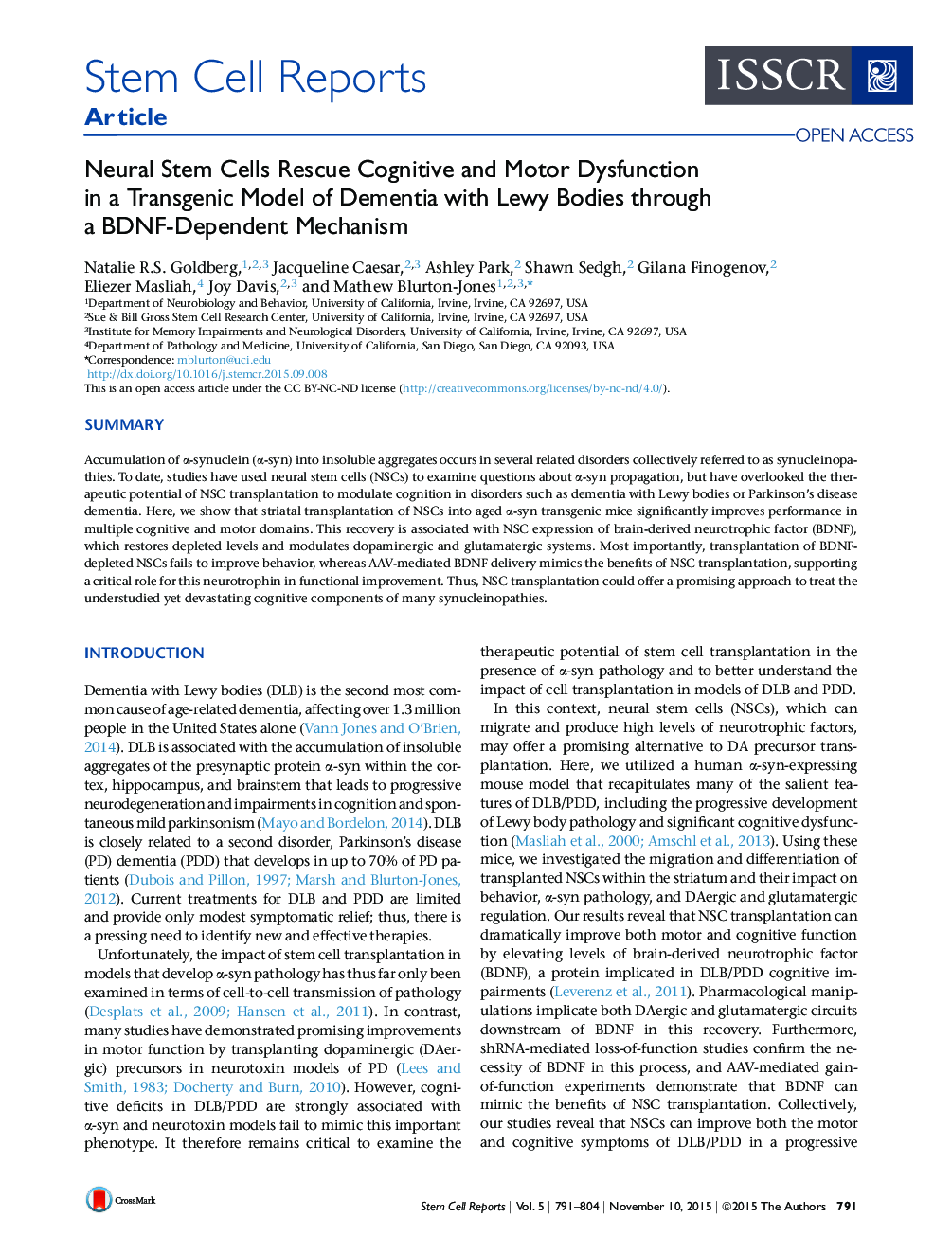| Article ID | Journal | Published Year | Pages | File Type |
|---|---|---|---|---|
| 2093752 | Stem Cell Reports | 2015 | 14 Pages |
•α-Synuclein mice exhibit significant DLB/PDD-associated cognitive and motor deficits•Striatal NSC transplantation dramatically improves cognitive and motor function•BDNF is necessary for NSC-mediated behavioral improvements•NSC-BDNF promotes recovery by regulating dopaminergic and glutamatergic systems
SummaryAccumulation of α-synuclein (α-syn) into insoluble aggregates occurs in several related disorders collectively referred to as synucleinopathies. To date, studies have used neural stem cells (NSCs) to examine questions about α-syn propagation, but have overlooked the therapeutic potential of NSC transplantation to modulate cognition in disorders such as dementia with Lewy bodies or Parkinson’s disease dementia. Here, we show that striatal transplantation of NSCs into aged α-syn transgenic mice significantly improves performance in multiple cognitive and motor domains. This recovery is associated with NSC expression of brain-derived neurotrophic factor (BDNF), which restores depleted levels and modulates dopaminergic and glutamatergic systems. Most importantly, transplantation of BDNF-depleted NSCs fails to improve behavior, whereas AAV-mediated BDNF delivery mimics the benefits of NSC transplantation, supporting a critical role for this neurotrophin in functional improvement. Thus, NSC transplantation could offer a promising approach to treat the understudied yet devastating cognitive components of many synucleinopathies.
